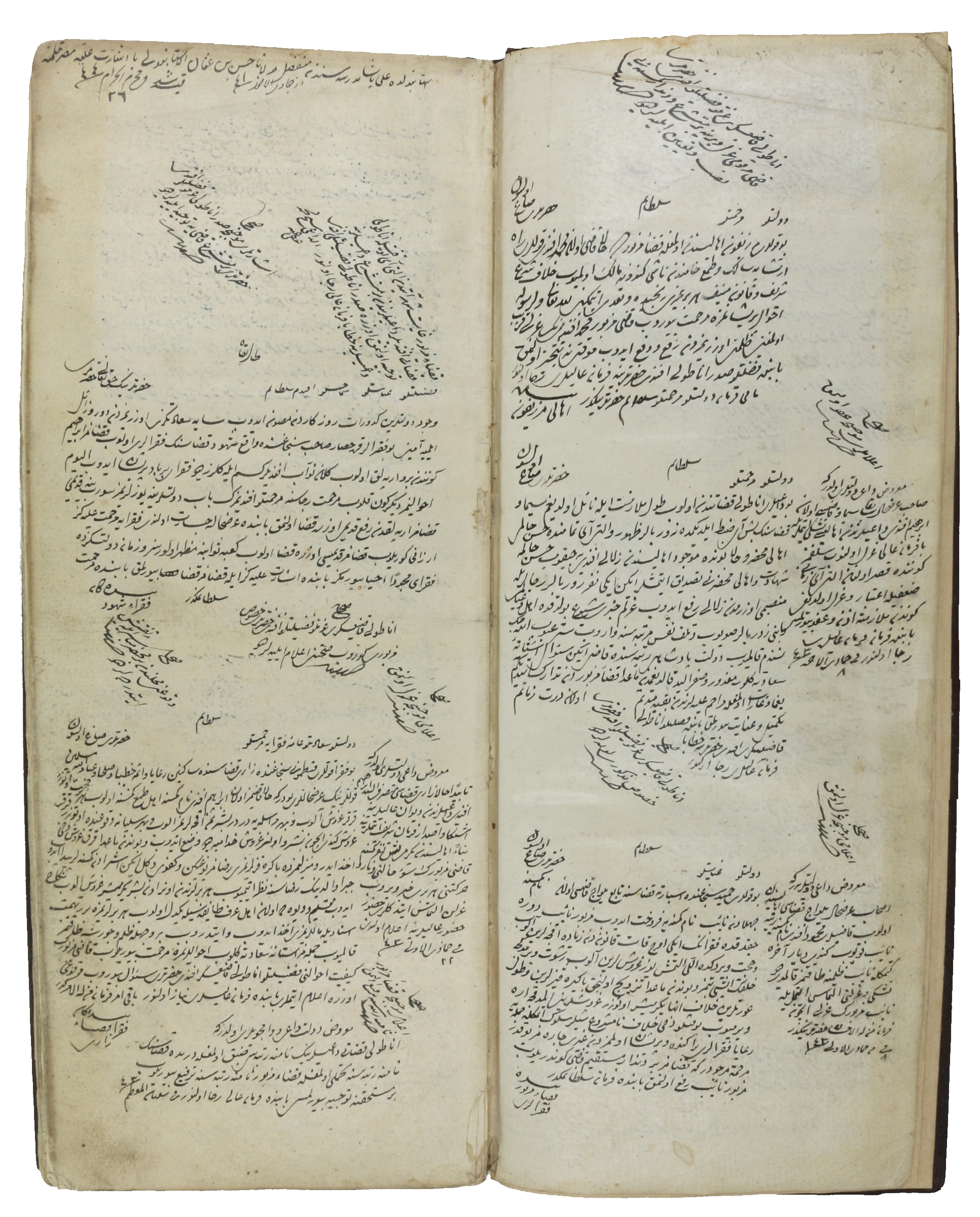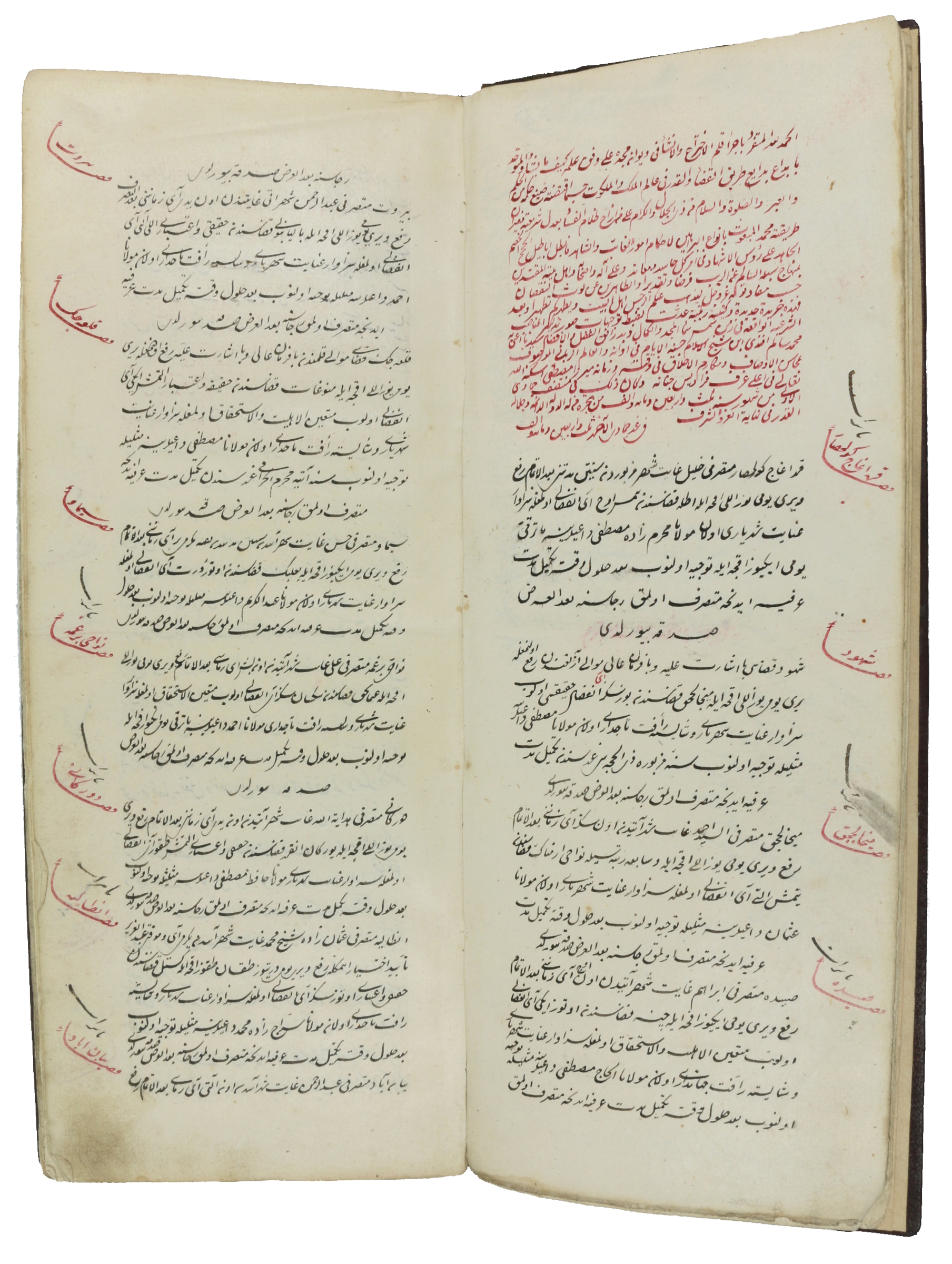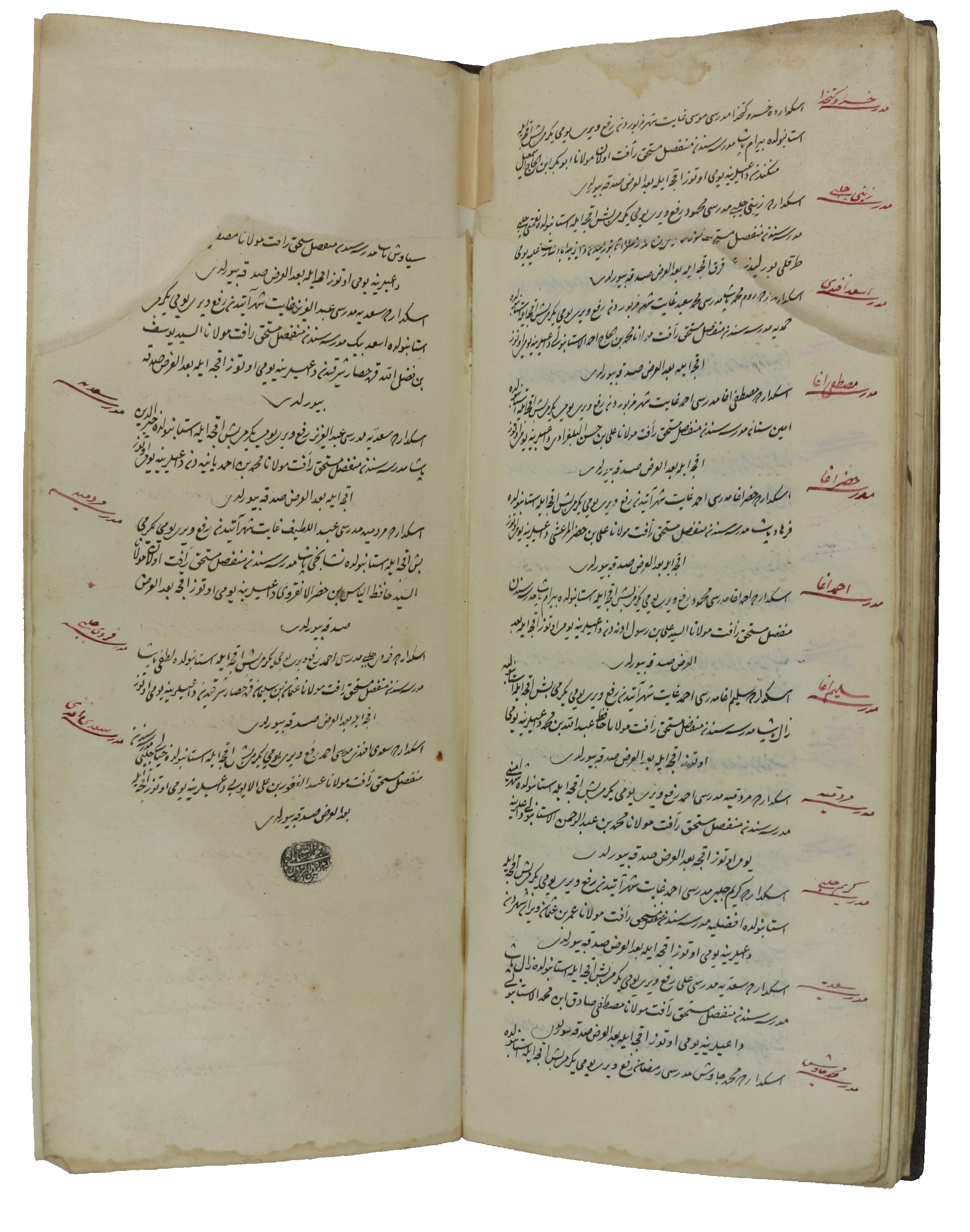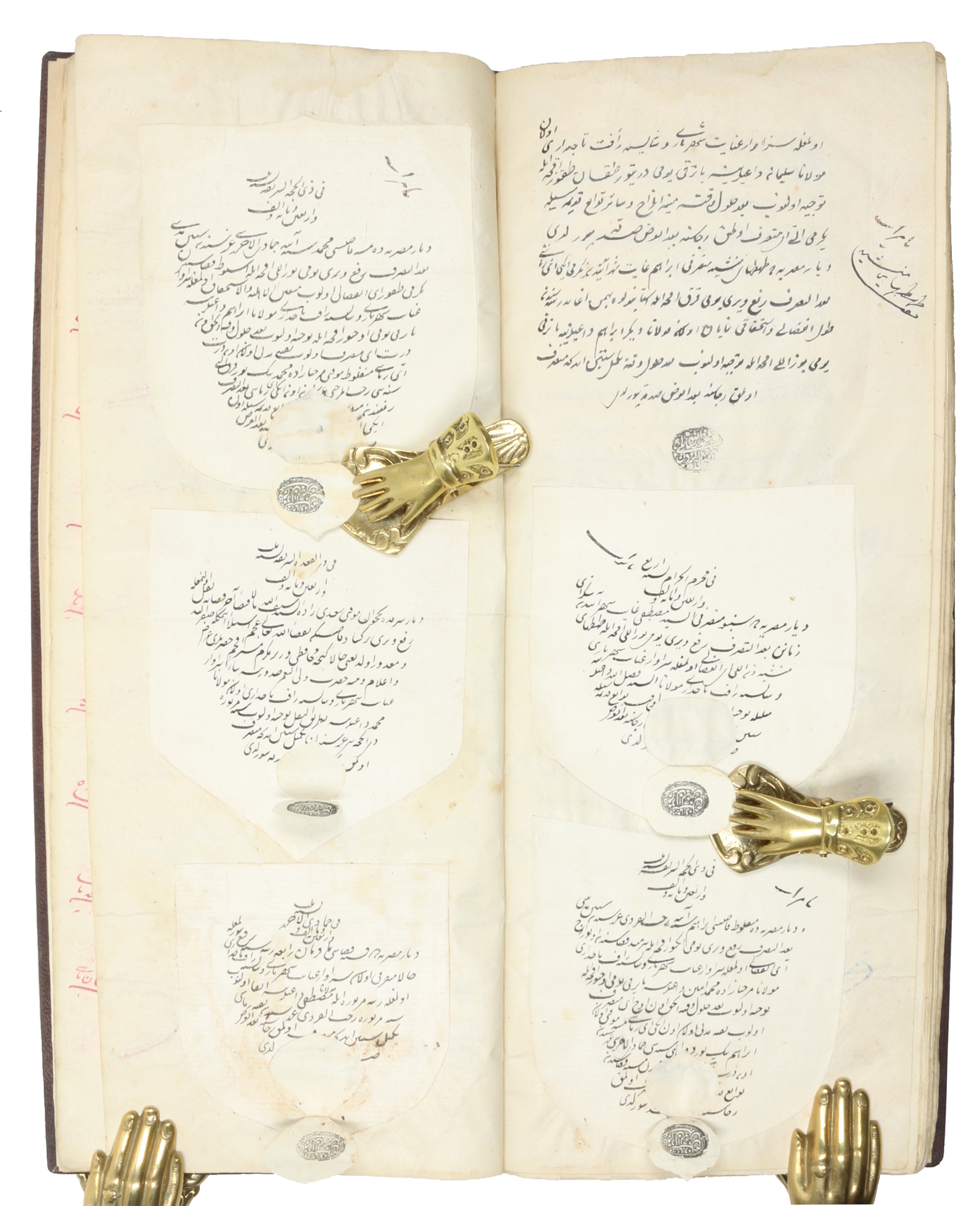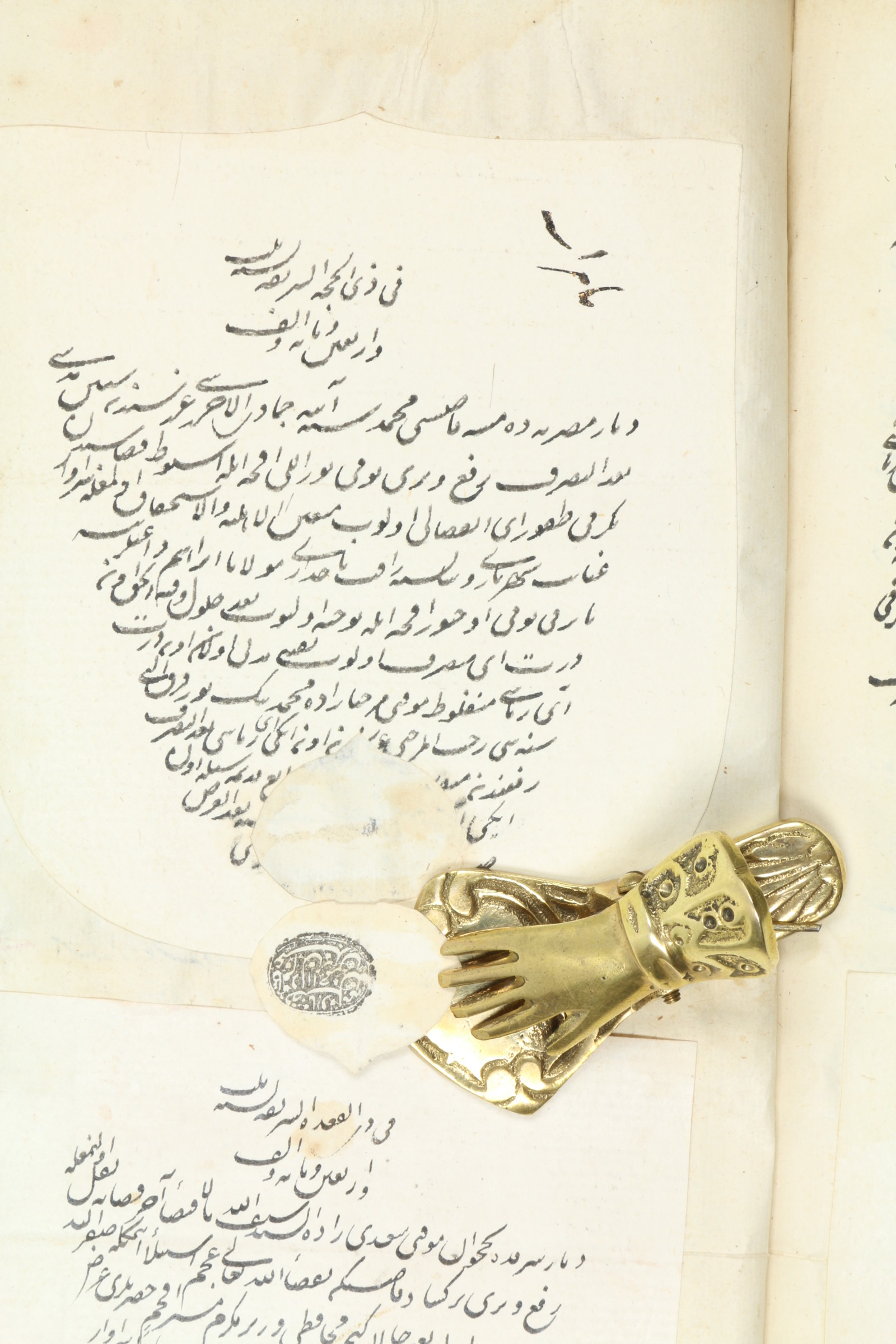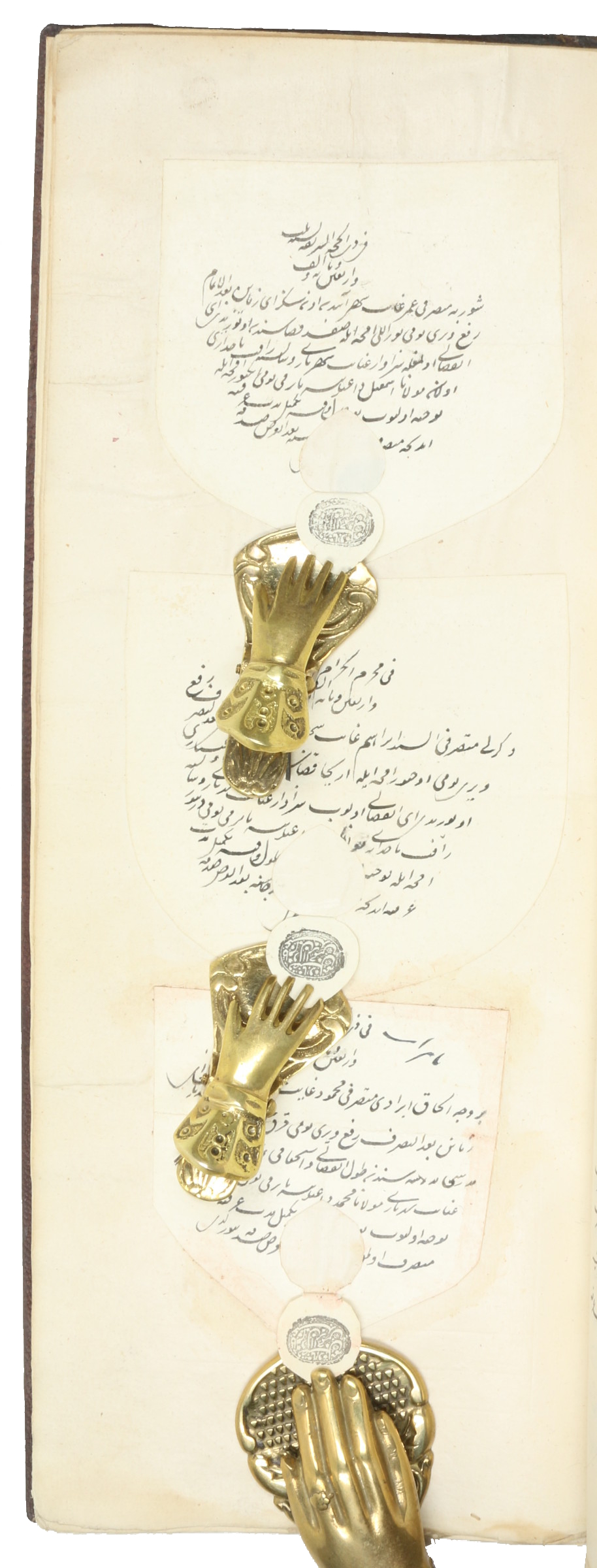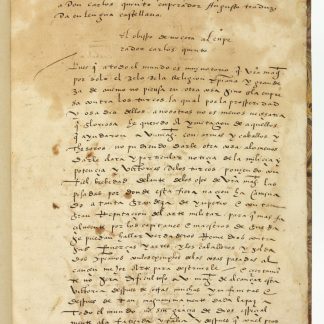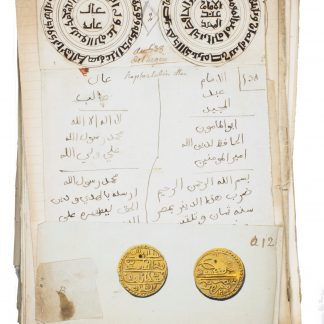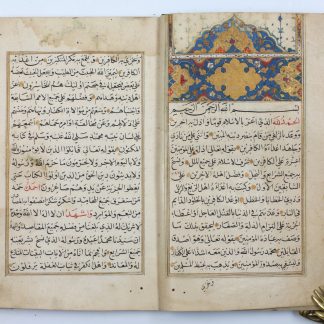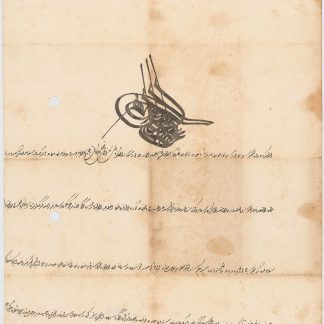Daybook for the Ottoman Empire's oriental administration: Jeddah, Basra, Beirut, Jericho, and Yerevan in 1731
[Mehmed Sâlim Efendi Rûznamçesi]. Rûznâmçe-i Hazret-i Sâlim Mehmed Efendi ibn-i Seyhülislâm Merhum ve Magfurun-leh Mirza Mustafa Efendi Rahimehullah.
Tall folio (150 x 372 mm). Ottoman Turkish manuscript on polished cream paper. 56 leaves (including some blank separators), ca. 31 lines, written in a mixed script of naskh and taliq. First part composed in free form with notes in black ink, second part in regular black ink captioned in red. Contemporary full calf binding decorated in gilt and red (professionally restored).
€ 28.000,00
A rare document of Ottoman state administration during the early Modern period: the official chronological record-book kept by the Kazasker (chief judge) of Anatolia, Mehmed Sâlim, during the year 1731.
Within the Ottoman administrational structure, the Kazasker (or Qadi'asker) had jurisdiction over all judicial and educational officials such as Kadi (judge) and Müderris (Madrasa professor), suggested candidates for these offices to the Grand Vizier, to whom he was directly responsible, and handled appeals to lower-court decisions. Since the late 15th century, the enormous size of the Ottoman Empire had necessitated the appointment of two Kazaskers, usually for the period of one year: the Kazasker of Rumelia, with jurisdiction over the European part of the Empire, and the Kazasker of Anatolia, responsible for the Asian part, comprising Anatolia, Syria, Palestine, Egypt, and the Arabian Peninsula.
The Kasazker would record all business in a book of original entry such as this one, known as the "Kazasker Ruznamçesi" (Kazasker daybook register). The present Ruznamçe concerns an impressively wide and diverse geography, from Anatolia to the Caucasus, the Arabian lands, the Nile and Northern Africa. Places in Anatolia include Üsküdar (Scutari), Marzvan (Merzifon), Bergama (Pergamon), and Antakya (Antioch); in the South Caucasus the book mentions Tblisi, Ganja, Igdir, Yerevan, and Javanshir. Places covered in the Levant, Arabia and Mesopotamia include Safed, Idlib, Jericho, Beirut, Homs, Hama, Baalbek, Latakia, Kirkuk, Basra, and Jeddah. From the Mediterranean to the regions south of the Nile, the book records matters pertaining to Cairo, Gharbia, Dakahlia, Alexandria, Damietta, Qalyubiyya, Faiyum, Minya (Hermopolis), Beni Suef, Monufia, Asyut, and Beheira; also the Kazasker's counselor for Egypt is mentioned. In Northern Africa, the book covers Algeria, Tunisia, Tripoli, and Djerba. Further, even Tirhala (Thessaly) is included, which normally would fall within the remit of the Kazasker of Rumelia.
Among these records, the high volume of official missions back and forth within the vast borders of the empire is hard to miss. Every year, hundreds of posts are filled throughout the country: in 1731, for example, one Sayyid Nureddin from Seferihisar (Izmir) was appointed to fill a position in Basra, 2500 kilometres away. There is also a steady stream of civil servants between Istanbul and Jeddah, more than 3000 kilometres distant. Entries in the daybook include a record for a Mevlana Ahmed, who, after having studied at the Molla Gürani Madrasah in Constantinople, is appointed Kadi (Judge) at Jeddah, salaried at 150 coins per day (cf. p. 828f.). Soon after, Ahmed is in turn replaced by Suleyman: "Ahmed, serving as the Kadi of Jeddah, relinquished his post, which he would have held until the first day of Rabi ath-Thani next year. In Ahmed's place, Mevlana Suleyman, who studied with forty akces per day at the Tuti Latif Madrasah in Istanbul and passed the exam successfully by completing the waiting period, was appointed as a Kadi to Jeddah with one hundred and fifty akces per day" (p. 835, transl.). This continuity gives evidence of the close relationship between the capital Istanbul and the Hejaz. Civil servants who were successful at the leading madrasahs of Istanbul could be appointed as Kadi in Jeddah, with a salary almost four times the pocket money they received in Istanbul - circumstances which also reveal the sensitivity of this region for the Ottoman Empire.
Of particular interest is also the appointment of a Kadi for Yerevan, as the Causacus region was long contested throughout the Ottoman-Safavid wars and the city changed hands frequently. In 1731 Yerevan came under Ottoman rule, and the Porte immediately appointed a Kadi there to ensure administrative and legal sovereignty at a time of ongoing political and military instability. Since Yerevan was mostly under Safavid-Persian rule throughout these centuries, appointments concerning Yerevan are very rare in Ottoman records.
Mirzâzâde Mehmed Sâlim Efendi (1688-1743), the Kazasker of Anatolia for 1730/31, was a noted scholar, poet and writer; he took the pen name "Sâlim" in the Tulip Era and was also a master calligrapher. Highly educated and remembered as a versatile and colourful personality, he served in various senior civil service positions. He was a connoisseur of science, law and art, and composed numerous works; also a talented linguist, he knew Turkish, Arabic and Persian well enough to compile a dictionary.
Binding restored to style with original covers laid down, 20th century bookbinder stamp of Rafet Güngör, Istanbul, to lower flyleaf. Occasional light edge flaws; upper part of last 4 leaves torn away with substantial loss, otherwise complete. Several old waqf stamps. At the end of the volume are numerous elaborate seals of Mehmed Sâlim, certified by a civil servant named as Abdurrahman. Their official character is underlined by having been prepared separately and pasted into the completed daybook, with a crescent-shaped cut in the paper creating a flap that conceals the stamped seal.
Cf. Abdurrahman Atcil, "The Route to the Top in the Ottoman Ilmiye Hierarchy of the Sixteenth Century", Bulletin of the School of Oriental and African Studies 72.3 (2009), 489-512.


